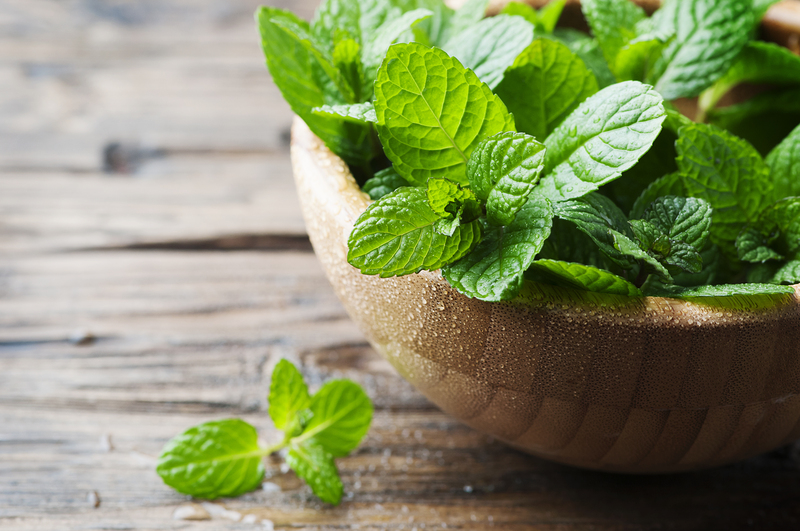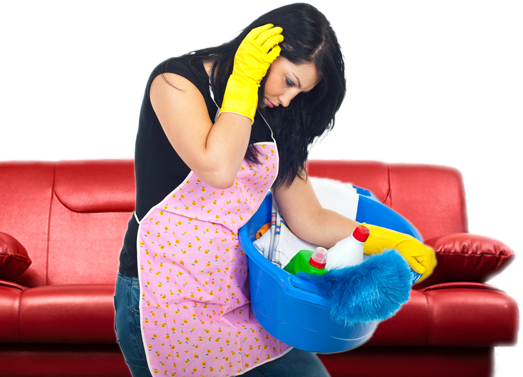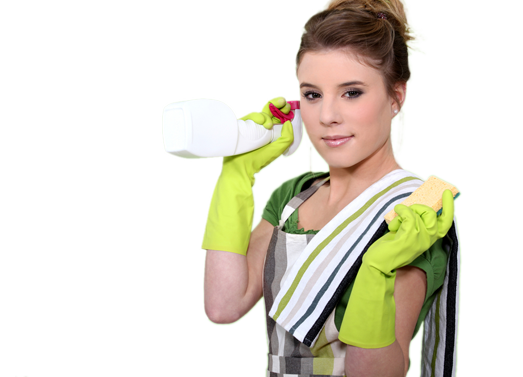Mastering the Art of Carpet and Floor Maintenance
Posted on 03/10/2025
Mastering the Art of Carpet and Floor Maintenance: The Complete Guide
When it comes to sustaining the beauty, longevity, and value of your home, few aspects are as crucial as carpet and floor maintenance. Whether you have plush carpets in the living room, hardwood floors in the hallway, or ceramic tiles in the kitchen, mastering the art of cleaning and maintaining these surfaces can dramatically enhance your home's aesthetics and hygiene. In this comprehensive guide, you'll learn the top strategies and expert-backed tips for keeping your floors pristine.

Why Carpet and Floor Maintenance Matters
A well-maintained floor acts as the foundation of a beautiful home interior. Regular carpet and floor cleaning not only preserves the look and feel of your surfaces but also safeguards your family's health by minimizing allergens, bacteria, and dust mites. Proper maintenance further extends the life of your flooring, reducing the frequency and cost of replacements or repairs.
- Enhanced Appearance: Clean floors brighten up any space, making it more inviting.
- Improved Air Quality: Removing dust and particulates improves indoor air quality.
- Higher Resale Value: Professionally maintained floors can significantly increase a property's market value.
- Longevity: Prevents damage and preserves your investment for years.
Types of Flooring and Their Unique Maintenance Needs
Not all flooring materials are created equal. Each type requires a unique approach to cleaning and upkeep. Let's explore popular options:
1. Carpet Flooring
- Care Tips: Vacuum carpets frequently--ideally at least twice a week--to remove dirt and prevent matting. Use doormats to reduce soil tracked onto carpets.
- Deep Cleaning: Schedule a professional deep cleaning every 12-18 months. Steam cleaning or hot water extraction are effective methods for removing embedded grime.
- Spot Treatments: Address spills immediately by blotting (not rubbing) with a clean cloth and using carpet-safe cleaners.
2. Hardwood Flooring
- Cleaning: Sweep or dust mop daily. Use a slightly damp cloth or mop for sticky residue, avoiding excessive water which can damage wood fibers.
- Avoid Harsh Chemicals: Stick to pH-neutral wood floor cleaners.
- Protect from Scratches: Place felt pads under furniture and rugs in high traffic areas.
- Maintenance: Consider refinishing every few years to restore shine and seal imperfections.
3. Tile Flooring
- Grout Care: Grout can be a magnet for stains. Clean with specialized grout cleaners or a paste of baking soda and water.
- Regular Cleaning: Sweep or vacuum to avoid grit that can scratch the tiles, and mop with a mild detergent.
- Sealing: Some tile types and grout lines benefit from periodic resealing to resist moisture and stains.
4. Laminate Flooring
- Cleaning: Use a dry dust mop or vacuum with a soft brush attachment. Wet mopping can cause swelling and warping.
- Stain Management: Quickly wipe up spills to avoid permanent damage.
Essential Tools for Effective Carpet and Floor Maintenance
Mastering the art of floor and carpet maintenance begins with assembling the right equipment. Your toolkit should include:
- High-quality vacuum cleaner with HEPA filter
- Microfiber mops and cloths for scratch-free cleaning
- pH-neutral floor cleaners for hardwood and laminate
- Stain removers formulated for carpets
- Gentle grout brushes for tile floors
- Floor protectors and doormats
Step-by-Step Guide: Daily, Weekly, and Seasonal Maintenance
Consistency is key in all forms of flooring care. Below is a detailed maintenance routine to maximize your floors' lifespan:
Daily Tasks
- Sweep or vacuum high-traffic areas
- Wipe up spills and stains immediately
- Shake out mats and runners to reduce debris accumulation
Weekly Tasks
- Vacuum carpets, rugs, and upholstery thoroughly
- Mop hard floors (tile, wood, laminate) according to manufacturer guidelines
- Dust corners, baseboards, and floor registers
Seasonal or Annual Tasks
- Deep clean carpets and area rugs using professional or rental equipment
- Refinish hardwood floors if wear and scratches are visible
- Reseal tile grout and select flooring as needed
- Move large furniture and appliances to clean hidden spots
Pro Tips for Stubborn Stains and Problem Areas
Dealing with Carpet Stains
- Act fast: The sooner you treat a stain, the better the results.
- Blot, don't scrub: Scrubbing can spread or embed stains.
- Homemade solutions: Combine white vinegar and water (1:2 ratio) for mild stains.
- For tough stains, use enzyme-based removers or consult a professional carpet cleaner.
Fixing Scratches on Hardwood Floors
- Minor scratches: Rub with a walnut or use a wood stain marker for quick touch-ups.
- Deep gouges: Consider sanding and refinishing for uniformity.
Reviving Tile and Grout
- Baking soda paste: Apply, scrub gently, and rinse away for lighter stains.
- Hydrogen peroxide: Works well for whitening grout lines.
Protecting Your Floors from Damage
A core element of carpet and floor care is proactive protection. Consider the following preventative measures:
- Use area rugs in high-traffic areas to reduce wear and tear.
- Install doormats at every entrance to trap dirt and moisture before it reaches your flooring.
- Place furniture pads underneath heavy furniture to prevent scratches and dents.
- Maintain proper humidity to reduce wood expanding or contracting.
- Discourage shoes indoors to minimize tracking of abrasive particles.
Choosing the Right Cleaning Products
With countless floor and carpet cleaning products on the market, it's easy to become overwhelmed. The right product depends on your specific flooring type. Here are some important guidelines:
- Carpets: Select cleaners that target the stain type (pet, wine, dirt) and avoid bleach, which can discolor fibers.
- Hardwood: Choose water-based, pH-neutral solutions. Avoid ammonia-based products, which can strip finish.
- Tile: Gentle tile and grout cleaners work for everyday maintenance; reserve harsher chemicals for severe stains.
- Laminate: Use products specifically labeled for laminates to avoid streaking or film buildup.
Natural and Eco-Friendly Maintenance Solutions
Many homeowners seek sustainable and non-toxic alternatives for carpet and floor upkeep. Natural solutions often work just as well as their chemical-laden counterparts:
- Baking soda as a deodorizer for carpets or to scour away stubborn stains on tiles.
- Vinegar and water may be used for tiles and some sealed hardwoods (test first!), avoiding it on natural stone or sensitive wood.
- Olive oil and lemon juice can polish and revitalize certain wood finishes.
Professional vs. DIY Cleaning: When to Call in the Experts
While regular DIY cleaning is crucial, certain situations call for professional attention:
- Annual carpet deep cleaning: Professionals have industrial equipment to remove deep-seated dirt and restore pile.
- Hardwood floor refinishing: Sanding and sealing are best handled by experts for a flawless look.
- Mold or water damage: These issues are safety hazards and demand specialized intervention.
Additionally, experts can offer tailored carpet and floor maintenance plans based on your specific needs and lifestyle.

FAQs: Your Top Floor and Carpet Maintenance Questions Answered
How often should I vacuum my carpets?
- For high-traffic spaces: Vacuum 2-3 times per week.
- For low-traffic areas: Once a week is usually sufficient.
What's the best way to remove pet hair from carpets and floors?
- Use a vacuum with a motorized brush for carpets; microfiber mops and rubber brooms are effective on hard floors.
How do I prevent fading in hardwood and carpeted areas?
- Use curtains or UV window films to block sunlight. Rearranging furniture periodically can help distribute exposure.
Conclusion: Unlocking the Secrets of Lasting Clean Floors
True mastery of carpet and floor maintenance comes down to understanding your flooring materials, using the right tools and products, and maintaining routine cleanliness. With the right habits in place, your home's foundation will remain beautiful, durable, and inviting for years to come.
- Stay consistent: Make carpet and floor cleaning a regular habit.
- Tailor your efforts: Adjust strategies for different flooring types.
- Invest in protection: Proactive care now saves money and preserves value down the line.
For further floor care wisdom, remember: an ounce of prevention is worth a pound of cure! Embrace these tips to truly master the art of carpet and floor maintenance.




